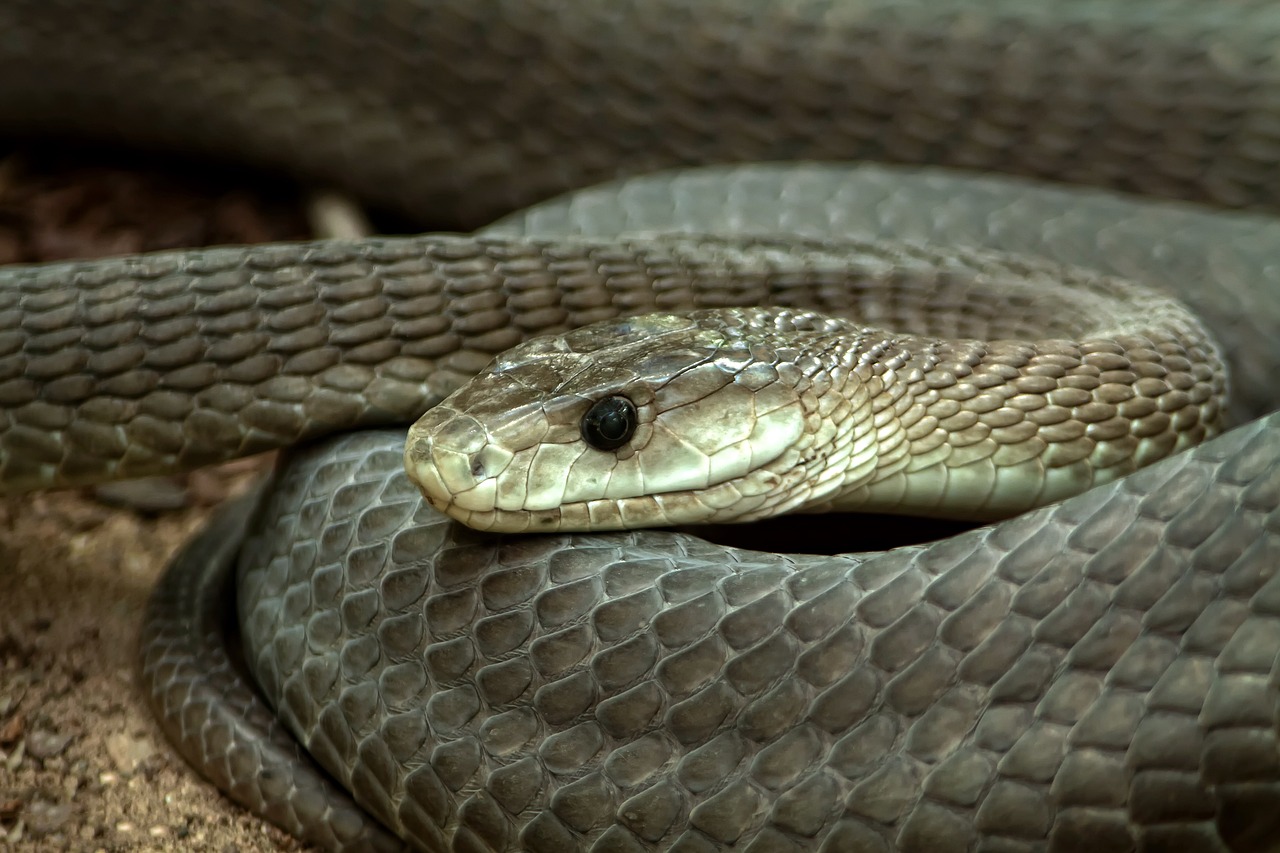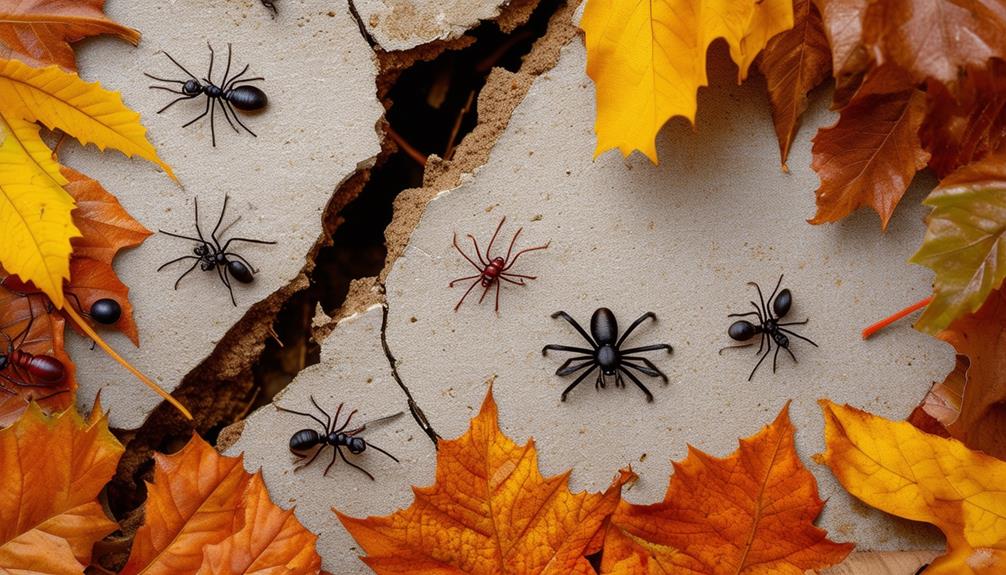Snakes, with their slithering bodies and seemingly limitless flexibility, have long intrigued and fascinated humans. One common question that often arises is whether snakes can climb up houses. To answer this question, it is necessary to delve into the intricate anatomy and physical adaptations of snakes, as well as explore their climbing techniques and the types of surfaces they are capable of scaling.
Imagine a scenario where a homeowner finds a snake slithering up the side of their house, causing a wave of panic and uncertainty. Understanding the capabilities of snakes when it comes to climbing houses can help alleviate fears and guide homeowners in taking appropriate preventive measures.
Snakes possess a unique anatomical structure that enables them to navigate a wide range of environments. Their long, muscular bodies allow them to move in a serpentine fashion, which aids in their climbing abilities. Additionally, snakes possess specialized scales on their bellies, known as ventral scales, which help them grip onto surfaces while climbing.
Key Takeaways
- Snakes have the ability to climb houses, trees, and various types of surfaces.
- Their unique anatomy and physical adaptations enable them to navigate vertical surfaces.
- Snake scales, composed of keratin, provide traction during climbing.
- Climbing allows snakes to access new food sources, suitable habitats, and potential prey.
Snake Anatomy and Physical Adaptations
Snake anatomy and physical adaptations enable these remarkable creatures to effortlessly scale vertical surfaces, even the walls of houses, instilling a sense of awe and wonder in those fortunate enough to witness their astonishing abilities.
Snake locomotion is a fascinating aspect of their biology that allows them to traverse various terrains, including climbing. Unlike mammals, snakes lack limbs and instead rely on their unique body structure and movement patterns to propel themselves forward. Their elongated bodies and flexible ribs allow them to adopt a serpentine motion, which involves the undulation of their muscles in a wave-like pattern. This locomotion method enables snakes to smoothly transition from one point to another, whether on the ground or vertically along surfaces.
Another essential feature that aids snakes in climbing is their scales. Snake scales are specialized structures that cover their entire bodies and serve several purposes. These scales are composed of keratin, the same material found in human hair and nails, which provides a protective layer.
The scales also play a crucial role in generating traction during locomotion, including climbing. The scales on a snake’s belly are larger and have tiny ridges or hooks that interlock with the surface, allowing the snake to grip and push itself forward. Additionally, the scales on the underside of the snake’s body have small, bristle-like projections called dermal papillae, which further enhance their grip. These adaptations, combined with the snake’s muscular movements, provide the necessary tools for them to climb vertical surfaces effortlessly.
Transitioning to the subsequent section about climbing techniques of snakes, it is important to note that their ability to climb is not solely reliant on their anatomy and scales. Snakes have developed various climbing techniques that further facilitate their ascent up houses and other structures.
Climbing Techniques of Snakes
Reptiles of the Serpentes order have demonstrated remarkable climbing abilities, as evidenced by their capacity to effortlessly traverse vertical surfaces such as tall trees or rocky cliffs. For instance, a study conducted in the rainforests of South America observed a specific snake species, the emerald tree boa, deftly ascending a towering tree trunk using its muscular body and specialized scales for grip. Snake climbing behavior is a result of their unique anatomical features and physical adaptations. Unlike most animals, snakes lack limbs, which allows them to navigate through tight spaces and wrap around objects. They rely on their powerful muscles and flexible bodies to propel themselves upwards, using a combination of lateral undulation and concertina movement. Lateral undulation involves the snake pushing its body against the surface and then moving forward by flexing its muscles in a wave-like motion. On the other hand, concertina movement is used when the snake needs to anchor itself and move vertically. It forms loops with its body, gripping the surface with its scales and then extending its body forward, creating a new loop higher up. This technique allows snakes to climb with great agility and maneuverability.
To emphasize the remarkable climbing abilities of snakes, consider the following table:
| Species | Climbing Speed (m/s) |
|---|---|
| Emerald Tree Boa | 0.3-0.5 |
| Common Rat Snake | 0.2-0.3 |
| Green Tree Python | 0.1-0.2 |
The table showcases the climbing speeds of different snake species. These speeds may seem slow compared to other animals, but they are impressive considering the lack of limbs and the challenging nature of vertical surfaces. The emerald tree boa, for example, can climb at a speed of 0.3 to 0.5 meters per second, which allows it to ascend tall trees efficiently. This agility in climbing enables snakes to access new food sources, evade predators, and find suitable habitats.
Transitioning into the subsequent section about the types of surfaces snakes can climb, it is fascinating to explore the diverse range of environments where snakes can navigate.
Types of Surfaces Snakes Can Climb
Snakes have the remarkable ability to climb various types of surfaces.
One of the key surfaces that snakes can climb are rough surfaces and textured walls. Snakes are able to navigate these surfaces by utilizing their scales, which have small ridges and hooks that allow them to grip onto irregular surfaces.
Additionally, snakes are also adept climbers when it comes to trees and branches. Their flexible bodies and strong muscles enable them to slither up and wrap around branches, providing them with stability and leverage as they ascend.
Rough Surfaces and Textured Walls
With their ability to navigate rough surfaces and textured walls, these creatures demonstrate their impressive climbing prowess.
Snakes have adapted to be able to climb a variety of surfaces, including those that are rough and have textures. This allows them to access areas that may otherwise be inaccessible to other animals.
Here are three examples of how snakes use their climbing abilities in different weather conditions:
- During rainy weather, snakes can climb up rough surfaces and textured walls to seek shelter. Their ability to navigate these surfaces allows them to find refuge from the wet and cold conditions. They can find crevices or small openings in walls where they can hide and stay dry.
- In hot weather, snakes can climb up walls to find shade. The rough and textured surfaces provide them with opportunities to find cooler areas. They may seek out areas with vegetation or shaded spots to escape the heat and regulate their body temperature.
- Even in windy conditions, snakes can climb up walls to avoid being blown away. The rough surfaces provide them with traction, allowing them to grip onto the surface and stay in place. This helps them to remain stable and avoid being carried away by strong winds.
With their ability to navigate rough surfaces and textured walls, snakes demonstrate their adaptability to different weather conditions. This climbing ability is just one aspect of their impressive survival skills.
Moving on to the next subtopic, snakes also have the ability to climb trees and branches, which further expands their range of habitats and hunting grounds.
Trees and Branches
Trees and branches serve as an expansive and versatile habitat for these agile creatures, allowing them to explore various hunting grounds and expand their range of survival.
Snakes are adept climbers, thanks to their unique anatomy and behavior. They use their long, flexible bodies to wrap around branches and secure a firm grip. Additionally, their scales provide traction, allowing them to maneuver effortlessly through the intricate network of branches. As they climb, snakes can also utilize tree roots and other irregularities in the bark to gain stability and leverage.
This ability to ascend trees and navigate branches gives snakes access to a wide range of potential prey, such as birds, eggs, and small mammals, which may be found in the tree canopy. Furthermore, the elevation allows snakes to avoid predators and find shelter from harsh weather conditions.
In addition to providing a hunting ground, trees and branches offer snakes protection and camouflage. The dense foliage and intricate structure of trees provide hiding spots and concealment, making it difficult for predators or prey to spot them. Snakes can blend in with their surroundings, making them virtually invisible to unsuspecting eyes. This ability to remain hidden while surveying the area for potential meals gives snakes a distinct advantage in their quest for survival.
As we delve into the factors that influence snake climbing abilities, it becomes evident that their proficiency in tree climbing is a result of their unique adaptations and behaviors.
Factors That Influence Snake Climbing Abilities
Factors such as the surface texture and incline of the house, as well as the strength and flexibility of the snake’s body, can influence its climbing abilities. Snakes are highly adaptable creatures that have evolved various strategies for climbing. They use a combination of muscular contractions, body undulations, and specialized scales to grip onto surfaces and propel themselves upwards. The surface texture of the house plays a role in snake climbing behavior, as snakes are more likely to climb houses with rough textures that provide better traction. Additionally, the incline of the house affects the snake’s ability to climb. Steep inclines can be more challenging for snakes, as they require more strength and agility to navigate. However, snakes have a remarkable ability to climb vertically, allowing them to overcome moderate inclines.
In terms of the snake’s body, both the strength and flexibility play important roles in their climbing abilities. Snakes have strong muscles that allow them to generate the force needed to propel themselves upwards. The flexibility of their bodies enables them to contort and wrap around objects, providing additional support during climbing. These factors, combined with the snake’s unique scales, which provide friction and grip, contribute to their impressive climbing speed. Some snake species can climb at a rate of up to 1 meter per second, allowing them to quickly ascend houses and other vertical structures.
Understanding the factors that influence snake climbing abilities is essential when considering how to prevent snakes from climbing your house. By modifying the surface texture and incline of the house, it is possible to make it less conducive for snakes to climb. Additionally, implementing physical barriers, such as installing snake-proof fences or using mesh screens on windows, can also be effective in preventing snake access. Taking these preventive measures can help create a snake-free environment and ensure the safety and peace of mind of homeowners.
How to Prevent Snakes from Climbing Your House
One effective method to deter snakes from accessing your home is by implementing appropriate preventive measures and modifying the structure of your house.
One way to prevent snakes from climbing your house is by using snake repellents. These repellents are typically made with natural ingredients that emit strong odors that snakes find unpleasant. By applying snake repellents around the perimeter of your house, you can create a barrier that deters snakes from approaching.
Another important step in preventing snakes from climbing your house is sealing any potential entry points. Snakes can squeeze through very small openings, so it is crucial to inspect your home for any cracks or gaps in the foundation, walls, or windows. By sealing these entry points with caulk or other appropriate materials, you can effectively block snakes from gaining access to your house.
Additionally, it is important to check for any gaps or holes in the roof and attic, as snakes may use tree branches or other objects near your house as a means to climb onto the roof.
Using snake repellents and sealing entry points are effective methods to prevent snakes from climbing your house. By implementing these preventive measures, you can create a snake-free environment and ensure the safety and peace of mind for you and your family.
Frequently Asked Questions
What are the different types of snakes that can climb houses?
Snake climbing techniques vary among different species. Some common house snake species that are known to climb houses include rat snakes, corn snakes, and black racers. These snakes use muscular contractions and specialized scales to grip and climb vertical surfaces.
Are there any specific features on a house that make it more susceptible to snake climbing?
The impact of landscaping on snake climbing behavior and techniques to snake-proof a house are crucial considerations. Landscaping features such as trees and shrubs can provide access points, while sealing openings and installing barriers can effectively prevent snake intrusion.
Can snakes climb up slippery surfaces such as glass windows or metal panels?
Slippery surface challenges: Snakes possess remarkable climbing abilities, but glass windows and metal panels present difficulties. Their scales lack traction on smooth surfaces, making it challenging for them to navigate and conquer vertical obstacles. The art of snake climbing involves utilizing their muscular bodies and specialized scales to grip onto rougher surfaces.
Are there any behaviors or characteristics that indicate a snake is more likely to attempt climbing a house?
Snake climbing behavior is influenced by various factors, including species, habitat, and body structure. Some species, such as arboreal snakes, possess adaptations like prehensile tails and specialized scales, making them more likely to attempt climbing houses. Snake climbing behavior is a fascinating aspect of their natural abilities, with some snakes able to navigate vertical surfaces with ease.
Are there any natural deterrents or repellents that can be used to prevent snakes from climbing houses?
Natural snake repellent options include using essential oils like cinnamon, clove, and cedarwood, or planting repellent plants such as marigold and lemongrass. DIY snake deterrent methods involve using physical barriers like mesh fences or sealing entry points.





